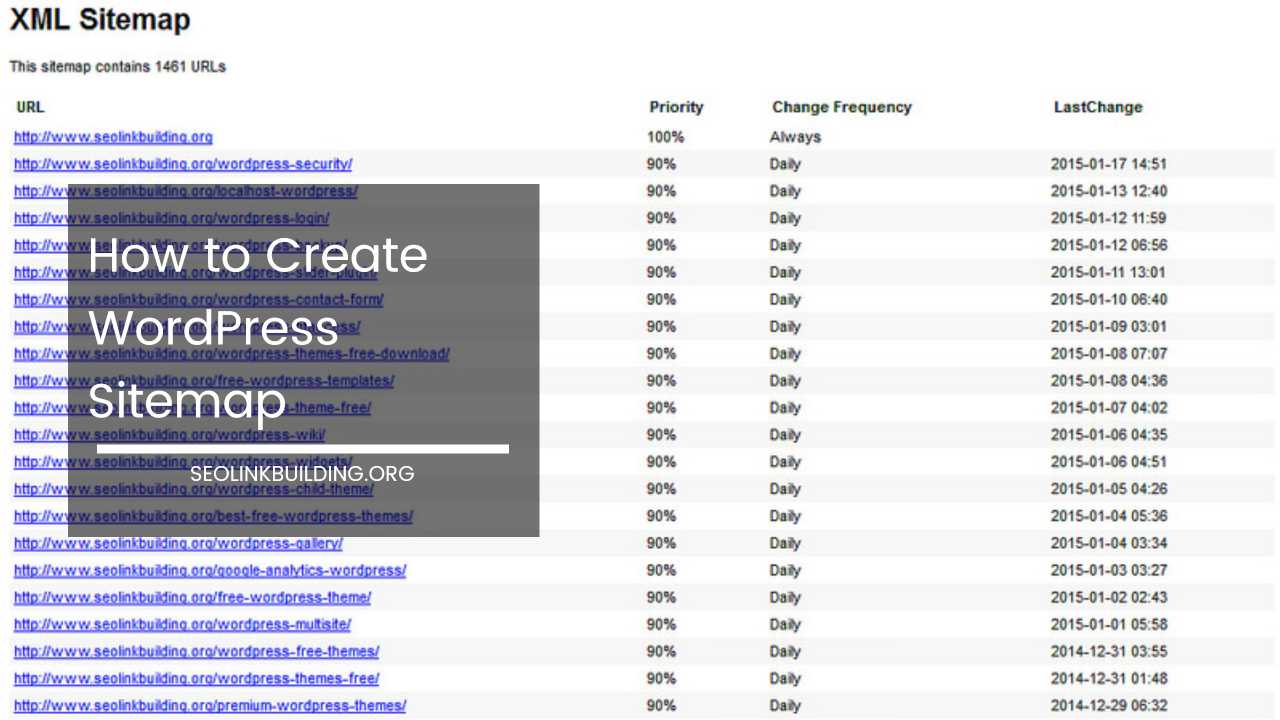Local SEO Ranking Factors Every Business Should Know

Local SEO Ranking Factors
In today’s digital age, having a strong online presence is essential for the success of any business. Local search engine optimization (SEO) has become a critical aspect of this online presence, as it helps businesses improve their visibility in local search results.
When potential customers are searching for products or services in their area, local SEO can make the difference between being found and being overlooked.
To excel in local SEO, it’s crucial to understand and leverage the various ranking factors that can impact your business’s search engine rankings.
In this article, we will delve into the key local SEO ranking factors every business should know to stay competitive in their local market.
What is Local SEO?
Local SEO is a subset of search engine optimization that focuses on optimizing a business’s online presence to appear in local search results. These results are often displayed in maps and localized search queries.
When users search for phrases like “best coffee shop near me” or “plumber in [city],” search engines aim to deliver the most relevant and geographically appropriate results.
Local SEO helps businesses increase their visibility for these types of searches, driving more potential customers to their physical locations or websites.
The Importance of Local SEO
Local SEO has gained tremendous importance in recent years, thanks to the increasing use of mobile devices and voice search.
People frequently use their smartphones to find nearby businesses or services, making local SEO a crucial strategy for businesses of all sizes. Here’s why local SEO matters:
- Higher Visibility: Local SEO helps your business appear at the top of local search results, increasing the likelihood that potential customers will find and engage with your business.
- Competitive Edge: Many of your competitors are likely investing in local SEO. To stay competitive, you must optimize your online presence for local searches.
- Targeted Traffic: Local SEO ensures that you attract visitors who are most likely to convert into customers since they are actively seeking products or services in your area.
- Improved User Experience: Local SEO often involves optimizing your website for better user experience, which can lead to increased engagement and customer satisfaction.
Now that we understand the importance of local SEO let’s explore the key ranking factors that every business should be aware of:
1. Google My Business (GMB) Optimization
Google My Business is a free tool provided by Google that allows businesses to manage their online presence on Google Search and Google Maps. Optimizing your GMB profile is one of the most critical factors for local SEO success. Here’s how you can do it:
- Claim and Verify Your Listing: Claim your business on Google My Business and verify it. This step is essential for establishing trust with Google and potential customers.
- Complete Your Profile: Fill out every section of your GMB profile, including your business name, address, phone number, website, hours of operation, and business category.
- Add High-Quality Images: Upload high-resolution images of your business, products, and services. Visual content can significantly impact a user’s decision to engage with your business.
- Encourage Reviews: Encourage customers to leave reviews on your GMB profile. Positive reviews can boost your rankings and credibility.
- Monitor and Update: Regularly update your GMB profile with any changes, such as new products or services, holiday hours, or contact information.
2. On-Page SEO
On-page SEO refers to the optimization of individual web pages to improve their search engine rankings. For local SEO, it’s crucial to optimize your website’s content and structure to cater to local search queries. Here are some on-page SEO strategies to consider:
- Keyword Optimization: Research and use relevant local keywords throughout your website’s content, meta tags, and headings.
- Local Content: Create high-quality, locally relevant content that addresses the needs and interests of your local audience. This can include blog posts, guides, and informative pages related to your area.
- NAP Consistency: Ensure that your business’s name, address, and phone number (NAP) are consistent across your website, GMB profile, and other online directories.
- Schema Markup: Implement schema markup to provide search engines with structured data about your business, such as your location, hours of operation, and reviews.
3. Online Reviews and Ratings
Online reviews and ratings have a significant impact on local SEO. Positive reviews can improve your visibility and credibility, while negative reviews can harm your reputation. Here’s how to manage reviews effectively:
- Encourage Reviews: Politely ask satisfied customers to leave reviews on platforms like Google, Yelp, and Facebook. Make it easy for them by providing direct links.
- Respond to Reviews: Engage with your customers by responding to their reviews, both positive and negative. Thank customers for positive feedback and address concerns in a professional manner.
- Monitor Your Reputation: Use online reputation management tools to monitor mentions of your business and track your online reputation. Address any issues promptly.
4. Local Link Building
High-quality backlinks from reputable local websites can significantly boost your local SEO efforts. Here’s how to build local links effectively:
- Local Directories: Ensure that your business is listed in local directories, such as Yellow Pages, Yelp, and local chamber of commerce websites.
- Guest Posting: Contribute guest posts to local blogs or news websites in your industry. This can help you earn authoritative backlinks.
- Sponsor Local Events: Sponsorship of local events or organizations can lead to online mentions and backlinks from event websites.
5. Mobile-Friendliness
Given the prevalence of mobile device usage, having a mobile-friendly website is crucial for local SEO.
Google’s mobile-first indexing means that the search engine primarily uses the mobile version of the content for ranking and indexing. Here’s how to ensure your website is mobile-friendly:
- Responsive Design: Use a responsive web design that adapts to different screen sizes and devices.
- Page Speed: Optimize your website’s loading speed for mobile devices. Slow-loading sites can lead to high bounce rates.
- Mobile Usability: Test your website’s mobile usability to ensure that users can easily navigate and interact with your site on smartphones and tablets.
6. Local Structured Data Markup
Local structured data markup, also known as schema markup, helps search engines understand the content and context of your web pages better.
By implementing structured data, you can enhance your search results with rich snippets, making your listings more appealing and informative. Include structured data for elements like:
- Business Name
- Address
- Phone Number
- Operating Hours
- Ratings and Reviews
- Product Information
Structured data markup can be added to your website’s HTML code or implemented using tools like Google’s Structured Data Markup Helper.
7. Social Signals
While the direct impact of social signals on local SEO is a topic of debate among SEO professionals, there is evidence to suggest that social media activity can indirectly influence your rankings. Here are some tips for leveraging social signals:
- Active Social Presence: Maintain an active presence on social media platforms relevant to your business. Share local news, events, and promotions.
- Engagement: Encourage engagement with your social posts through likes, shares, comments, and click-throughs to your website.
- Consistency: Ensure that your business information, such as name, address, and phone number, is consistent across all social media profiles.
8. User Experience and Website Design
A positive user experience is crucial for both local SEO and overall customer satisfaction. Google takes user experience into account when determining search rankings. To enhance user experience:
- Mobile Responsiveness: As mentioned earlier, ensure your website is mobile-responsive for users on smartphones and tablets.
- Easy Navigation: Have a clear and intuitive website structure that makes it easy for visitors to find information.
- Page Speed: Optimize page loading times, as slow websites can lead to higher bounce rates.
- Secure Website: Use HTTPS encryption to secure your website, as Google gives preference to secure sites in search results.
9. Local Content Marketing
Creating and promoting valuable, locally relevant content can help you build authority, attract backlinks, and engage with your local audience. Consider these content marketing strategies:
- Local Blog Posts: Write blog posts about topics relevant to your local community, industry, or events.
- Local News and Updates: Share news and updates about your business, such as new product launches, special offers, or community involvement.
- Guest Blogging: Contribute guest posts to local websites and publications to reach a wider audience and earn backlinks.
- Video Content: Create videos showcasing your products, services, and local expertise. Video content is highly engaging and can be shared on platforms like YouTube and social media.
10. Local SEO Audit and Monitoring
Regularly monitoring and auditing your local SEO efforts is crucial for ongoing success. Conducting audits helps you identify areas that need improvement and ensure that your strategies align with best practices. Here’s how to go about it:
- Keyword Performance: Track the performance of your target keywords in local search results. Are you moving up or down in the rankings?
- Traffic Analysis: Use tools like Google Analytics to analyze your website traffic, including the sources of traffic and user behavior.
- Competitor Analysis: Keep an eye on your competitors’ local SEO strategies and adapt as needed to stay competitive.
- Local SEO Tools: Utilize local SEO tools like Moz Local, BrightLocal, or SEMrush to automate audits and monitor your online presence.
In conclusion, local SEO is a dynamic and multifaceted strategy that requires ongoing effort and adaptation.
By optimizing your Google My Business profile, implementing on-page SEO best practices, managing online reviews, building local links, and ensuring a mobile-friendly and user-friendly website, you can significantly improve your local search rankings.
Keep an eye on emerging trends and algorithm updates to stay ahead of the competition in the ever-evolving world of local SEO. Remember, the ultimate goal is to connect with your local audience and drive more customers to your business.













